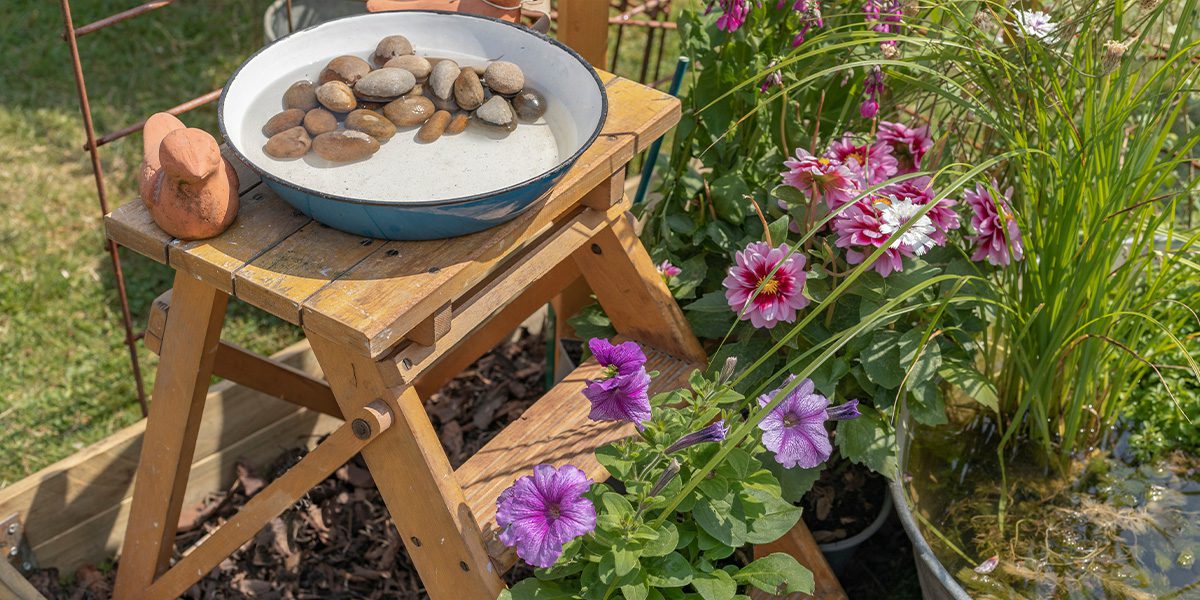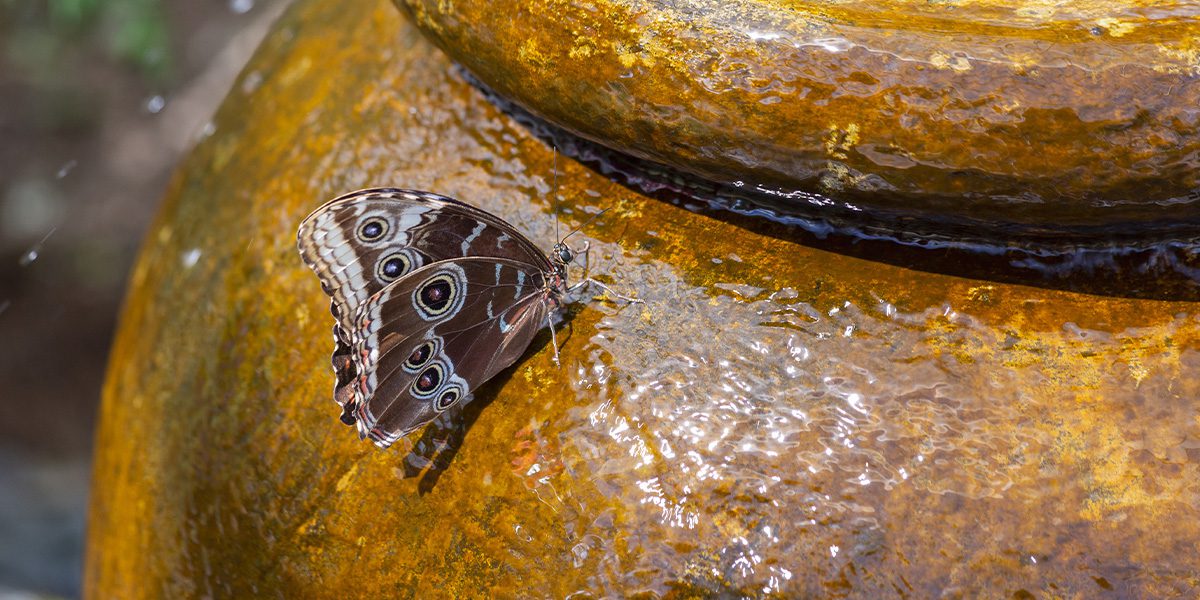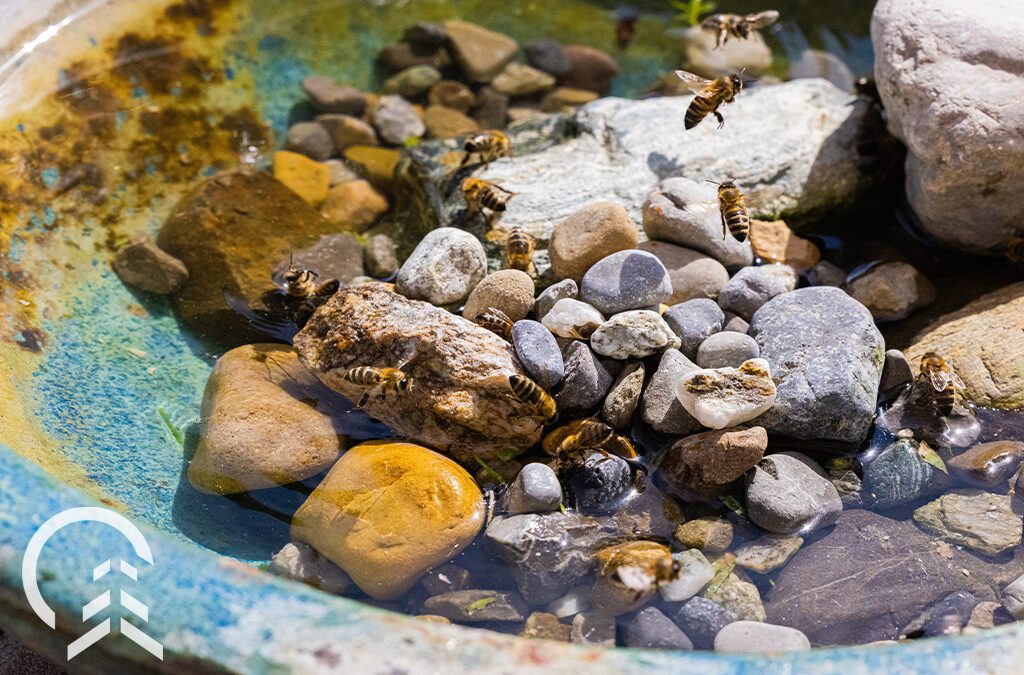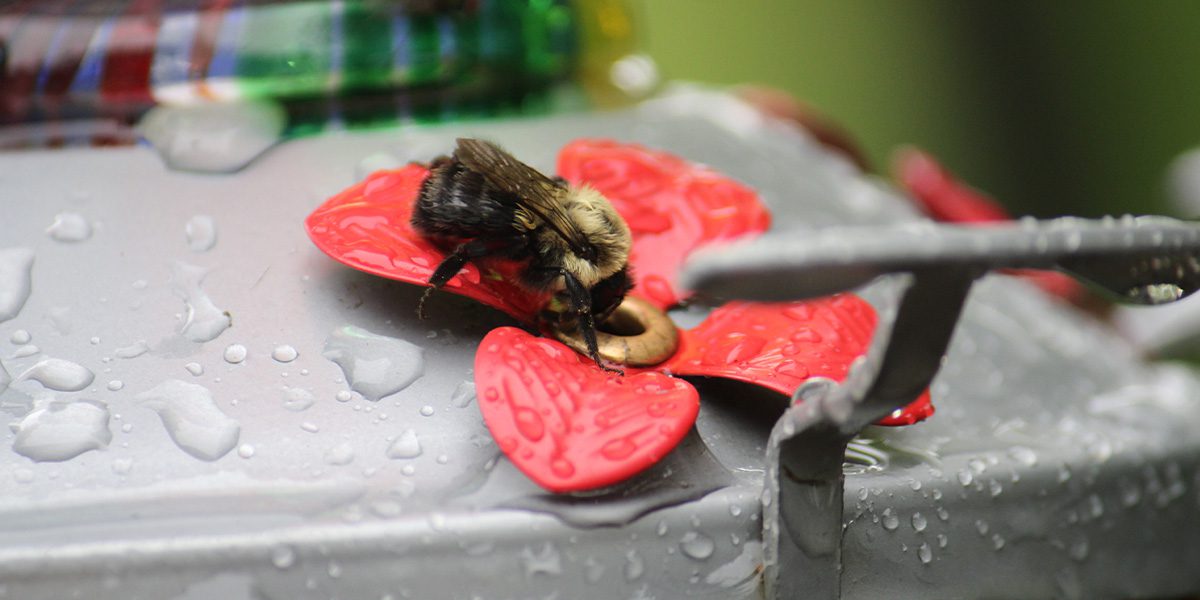Flowers are a pollinator’s best friend, but they’re not the only things they need to thrive. Like all creatures, pollinators need access to clean, reliable water sources. Luckily, they’re easy to provide! Building a simple bee and butterfly water station in your garden is a great way to attract more pollinators to your yard and protect them from droughts and dry spells. Here’s what you need to know!
What Do Bees Drink?
Unless you pay close attention to the insect world, you’ve probably never seen a bee have a drink, so it may come as a surprise to learn that they do, in fact, need and drink water, just like us. However, it’s not always easy for bees in a suburb or city to find a clean water source. Sometimes it can be contaminated by pesticides, or in dry spells, not there at all. When you set up a simple drinking station for pollinators in your vicinity, you’ll be surprised at how many come to use it.
Other Ways Pollinators Use Water
Bees, butterflies, and moths all need water to replenish their bodies, but they also use it for various other activities. Just as they store nectar, bees can store water inside their “honey stomachs,” or crops, to bring back to the hive, where they feed it to larvae, transfer it to in-hive workers, use it to moisten crystallized honey, or use it to cool down the hive during the summer heat. Other kinds of bees, like mason bees, use wet mud to line their burrows. Butterflies and bees also need minerals that they drink from pollinator-friendly water sources.
Ideas for Pollinator-Friendly Water Sources in Chicago
Creating a pollinator water station can be as simple as setting out a tray of water or a bird bath, but there are a few ways to make these sources even more user-friendly and attractive for beneficial insects. Here are a few simple bee and butterfly water station ideas you can use to help your pollinator friends drink up this summer:
- Bird Baths for Pollinators (aka the “Bee Bath” ): A bird bath is an ideal drinking source for bees; however, they can be difficult to access, and are a bit like a human trying to drink from a lake by dangling off a cliff. The solution? Place decorative rocks inside your bird bath, so the bees have something to land on. These rock perches create low-lying islands in the water for the bees to stand on, allowing them to safely access the water from the surface level.
- Butterfly Puddles: A moistened puddle of mud is a butterfly’s delight! You may have seen them gracefully fanning their wings beside a puddle in the park or a wet area near a stream, where they love to slurp up both water and essential minerals from the soil. To create a butterfly puddle in your yard, dig a small hole, line it with plastic or pond liner, fill it in with a loose mixture of sand, soil, and a little salt, and keep it moist by regularly spraying it down as part of your watering routine or by placing a drip irrigation hose next to it.

- Pollinator-Friendly Water Trays: You don’t need a full-sized bird bath to keep the bees refreshed; a shallow tray or ceramic saucer of water on the ground will do just fine! Like with the “bee bath,” place a few decorative rocks in your tray to give your bees better access. For a butterfly-specific tray, fill it with a mixture of wet sand, soil, and a little salt.
- Repurposed Hummingbird Feeders: Hummingbird feeders make ideal water stations for pollinators; just fill it with plain water instead of nectar, and you’re all set up! With numerous drinking ports and self-dispensing water, your repurposed feeder will quickly become a favorite watering hole for bees, butterflies, and plenty of other beneficial insects.
- Self-Filling Water Bowls: Another great water station idea is to use a self-filling water bowl, like the ones commonly used for pets. Their self-filling design means you won’t have to change and refill the water as often as you would a conventional tray or bee bath.

- Repurposed Water Features: If you have an existing fountain or pond in your landscape, you can make it easier for the pollinators to access by slowing down the water flow and placing decorative stones in and around the water’s surface for butterflies and bees to land on.
Other Tips for Creating Pollinator Water Stations in Chicago
Here are some easy ways you can make your water station even more attractive and easy to use, both for you and the bees:
- Change the Water Frequently: Remember to replace any standing water about once per week to oust mosquito larvae and keep your water station fresh for the bees, birds, and other pollinators.
- Place Your Water Station in a Bee-Friendly Location: The last thing you want is a bee flyway in a high-traffic area of your garden, so it’s best to place your water station in a safe place away from footpaths and other frequently-visited areas. If possible, keep it near your flowers to help the bees find it easier.
- Keep the Station Topped Up: This one’s pretty self-explanatory: if you want bees and butterflies to use your water station, remember to keep it full of water!
Flowers are key for attracting pollinators, but they’re not the most important features. By setting up a few bee and butterfly water stations alongside your gorgeous blooms, attractive overwintering sites, and insect-savvy garden techniques, you’ll be well on your way to creating a pollinator paradise that benefits your garden, pollinators, and your local ecology!
For more bee water station ideas or to stock up on flowers and gardening supplies, feel free to visit our garden centers in Bloomingdale and Carpentersville!
Platt Hill Nursery is Chicago’s premier garden center and nursery.



